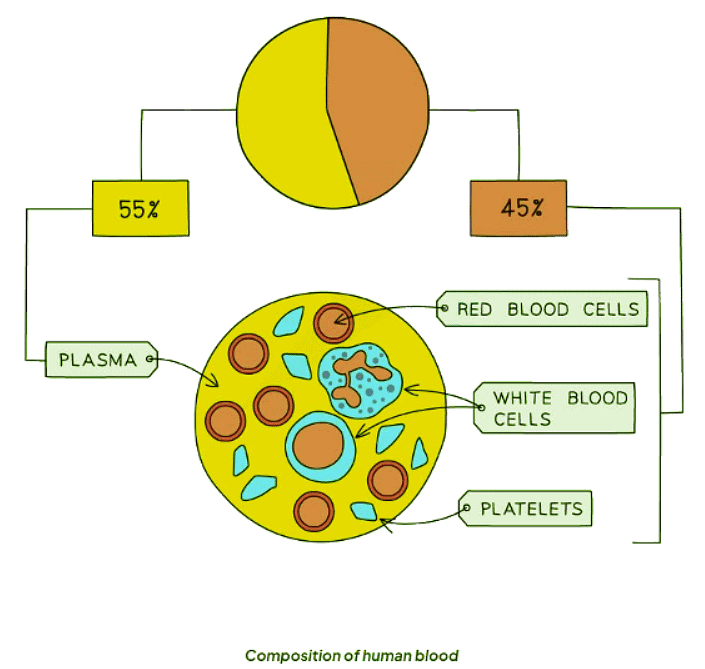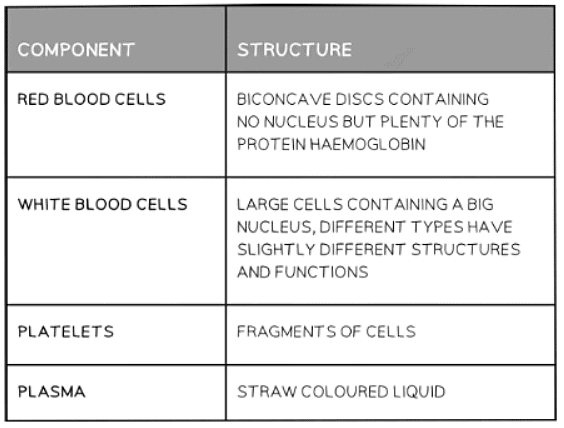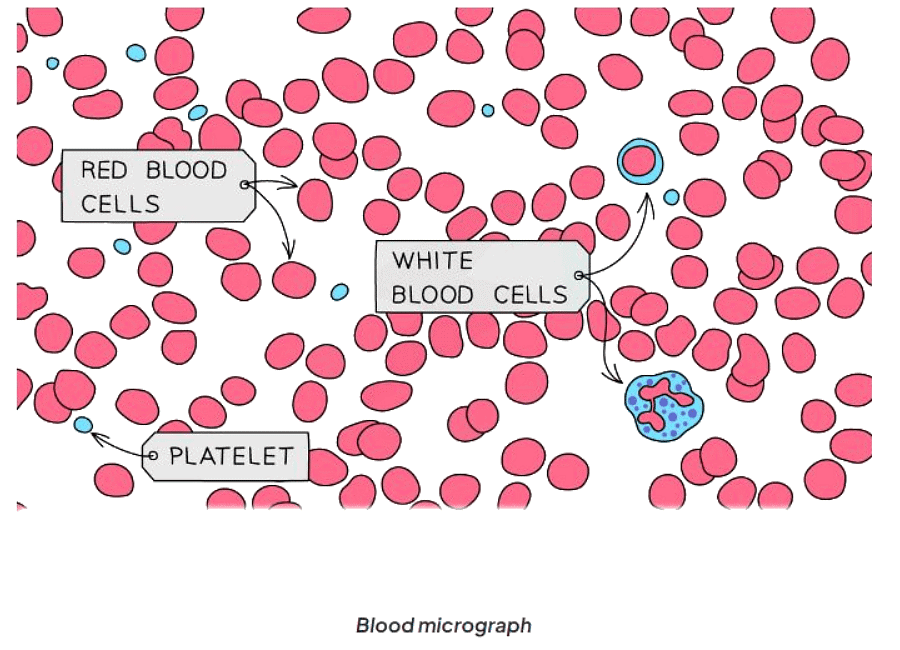Class 10 Exam > Class 10 Notes > Biology for GCSE/IGCSE > Components of Blood
Components of Blood | Biology for GCSE/IGCSE - Class 10 PDF Download
Components of Blood
- Blood consists of red blood cells, white blood cells, platelets, and plasma
- Red blood cells carry oxygen to body tissues
- White blood cells fight infections and foreign substances
- Platelets aid in blood clotting to prevent excessive bleeding
- Plasma is the liquid component of blood that carries nutrients and waste products

Components of the Blood Table

Identifying Red & White Blood Cells
- You should be able to recognize red and white blood cells in photomicrographs and diagrams.
- Red blood cells are characterized by their concave disc shape and the absence of a nucleus.
- White blood cells typically exhibit a round shape and possess a nucleus.

Components of Blood: Function
- Plasma plays a crucial role in transporting various substances such as carbon dioxide, digested nutrients, urea, mineral ions, hormones, and heat energy.
- Red blood cells are responsible for carrying oxygen from the lungs to cells in need of it for aerobic respiration. This oxygen is transported in the form of oxyhemoglobin.
- Oxygen is carried in the form of oxyhemoglobin by red blood cells.
- White blood cells protect the body from infections caused by pathogens through processes like phagocytosis and antibody production.
- Platelets aid in the clotting of blood, supporting the body's healing processes.
Question for Components of BloodTry yourself: Which component of blood is responsible for carrying oxygen from the lungs to cells?View Solution
The document Components of Blood | Biology for GCSE/IGCSE - Class 10 is a part of the Class 10 Course Biology for GCSE/IGCSE.
All you need of Class 10 at this link: Class 10
|
101 videos|193 docs|33 tests
|
FAQs on Components of Blood - Biology for GCSE/IGCSE - Class 10
| 1. What are the main components of blood and their functions? |  |
Ans. The main components of blood are red blood cells, white blood cells, platelets, and plasma. Red blood cells carry oxygen, white blood cells help fight infections, platelets are responsible for blood clotting, and plasma carries nutrients, hormones, and waste products.
| 2. How can you identify red blood cells under a microscope? |  |
Ans. Red blood cells can be identified under a microscope by their biconcave shape, lack of a nucleus, and red color due to the presence of hemoglobin.
| 3. What are the characteristics of white blood cells that differentiate them from red blood cells? |  |
Ans. White blood cells have a larger size, a nucleus, and the ability to move on their own (amoeboid movement) compared to red blood cells. They also play a crucial role in the immune response.
| 4. How do red blood cells contribute to the body's oxygen transport system? |  |
Ans. Red blood cells contain hemoglobin, a protein that binds to oxygen in the lungs and carries it to tissues throughout the body. This process is essential for cellular respiration and energy production.
| 5. What is the significance of platelets in blood clotting? |  |
Ans. Platelets are essential for blood clotting as they help seal off damaged blood vessels by forming a plug. They release clotting factors that initiate the formation of a fibrin mesh, which stabilizes the clot and stops bleeding.
Related Searches















